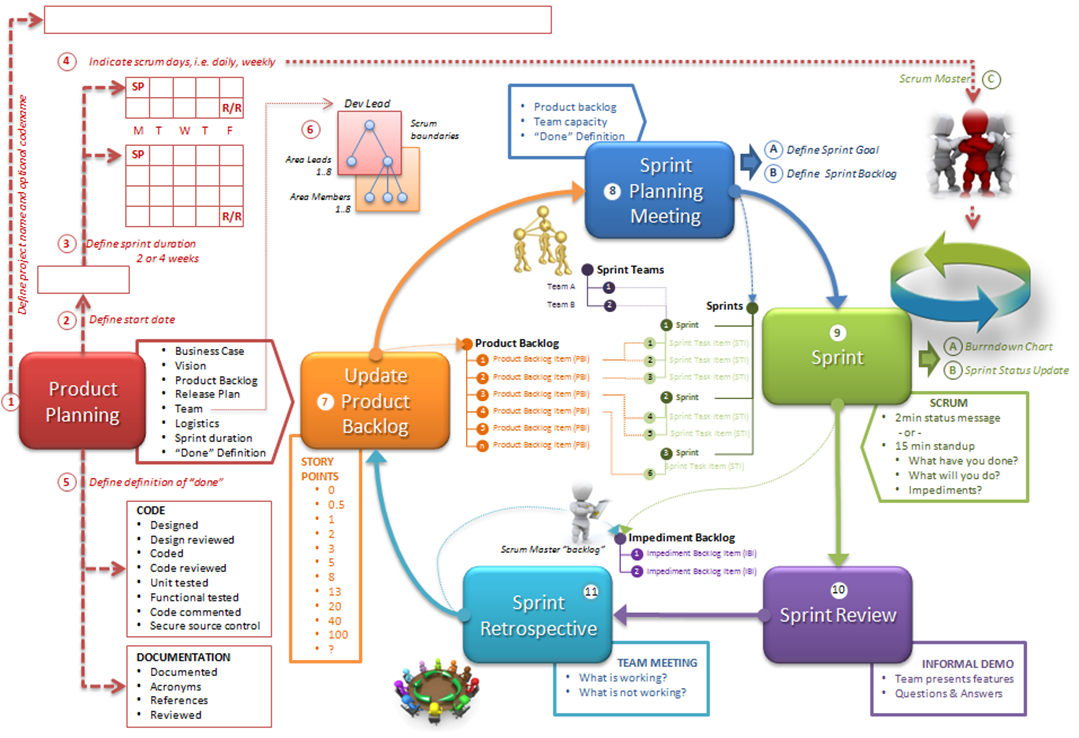To scrum or to Run … that is the agile question?
Scrum … are we playing rugby?
While the term “scrum” is typically used in the context of the sports game Rugby and Springbok victories are a welcome news flash, we will defer the sports discussion thread to another day. Instead we will be focused on the Agile Scrum framework, a software engineering topic we covered in SDLC – Software Development Lifecycle … agility strikes back with energy (part 4 of many). While practicing scrum concepts over the past few years and especially after learning more concepts during this week’s scrum course we attended , it has become apparent that the term Scrum used in the context of software engineering, highlights the need for agility and teamwork. If you are slow to react, if you are unable to make successes and failures transparent and learn from them, and if your team members are not adaptive and nimble, then you may decide to revisit the SDLC – Software Development Lifecycle … what’s the point? (links to all posts) page to find alternatives of running a software project and chose a more appropriate framework.
This is “NOT” the team environment we are striving for … -->
A journey of picking the best cherries
As part of our projects, which are fast paced and strategic, made up of professional and passionate team members spanning numerous time zones and geographic areas, we are in the process of trying Scrum concepts. We are picking the best cherries from the trees and evolving a project ecosystem that allows us to be as nimble, as fast paced, as responsive and as adaptive as the professional rugby sports teams. The objective is to raise transparency, to make problems, failures and successes blatantly visible, to promote collaboration, and to deliver an environment that delivers tangible value to the software engineering project team.
The short-term challenge is to select the best scrum tenants, deliver an initial process and framework that adds value to the team and then evolve to full or near-full scrum compliance, while learning and improving continuously.
It can be done!
Trying to visualize and “remember” the process
As always I have to visualize everything for myself and the following DRAFT diagram is evolving over time. Used as a quick reference poster and cheat sheet it allows us to visualize and memorize the overall environment and flow in our minds.
My list of latest questions in terms of Scrum
The following are a list of questions I am pondering over in my mind … perhaps you have more, or even some answers that we can accumulate and discuss under the comments:
- Is scrum the right framework for geographically dispersed project teams, especially when they seldom have face to face collaboration?
- Is scrum the right framework for project teams that are working on multiple projects concurrently?
- How do we convince the sponsors, especially those that have grown up with formal processes, i.e. CMMI, that Scrum is a radically different, yet valuable framework?
- How do we convey the chicken versus pig concept to executives or in culturally sensitive environments, without upsetting anyone?
- Who do we assign as Scrum Master, especially when the organization has no certified scrum masters (CSM) available?
- Should teams working with team Foundation Server (TFS) use the MSF Agile process template, the Conchango Scrum process template or the Lightweight Scrum process template?
- Is it wrong for teams to customise the scrum process, for example to use weekly instead of daily scrum sessions, or are they setting themselves up for a hiding?
… there are so many more questions, but let’s tackle these first. Please add your views and comments to this post, so that we can initiate some discussion(s).
Scrum Training
There is obviously the Certified Scrum Master (CSM) training (see https://www.scrumalliance.org/ to find a class) which is very worthwhile and which I will likely be enjoying during the course of the next year. What has and is missing is a course that introduces the Scrum fundamentals, Team Foundation Server (TFS) and the use of both, to developers in particular. Well, we attended a preview of what is to come last week, gave tons of feedback and are using some of the learning's in our exercise of adopting scrum concepts. More on the course in future blogs … watch the space, it is worth the wait :)
